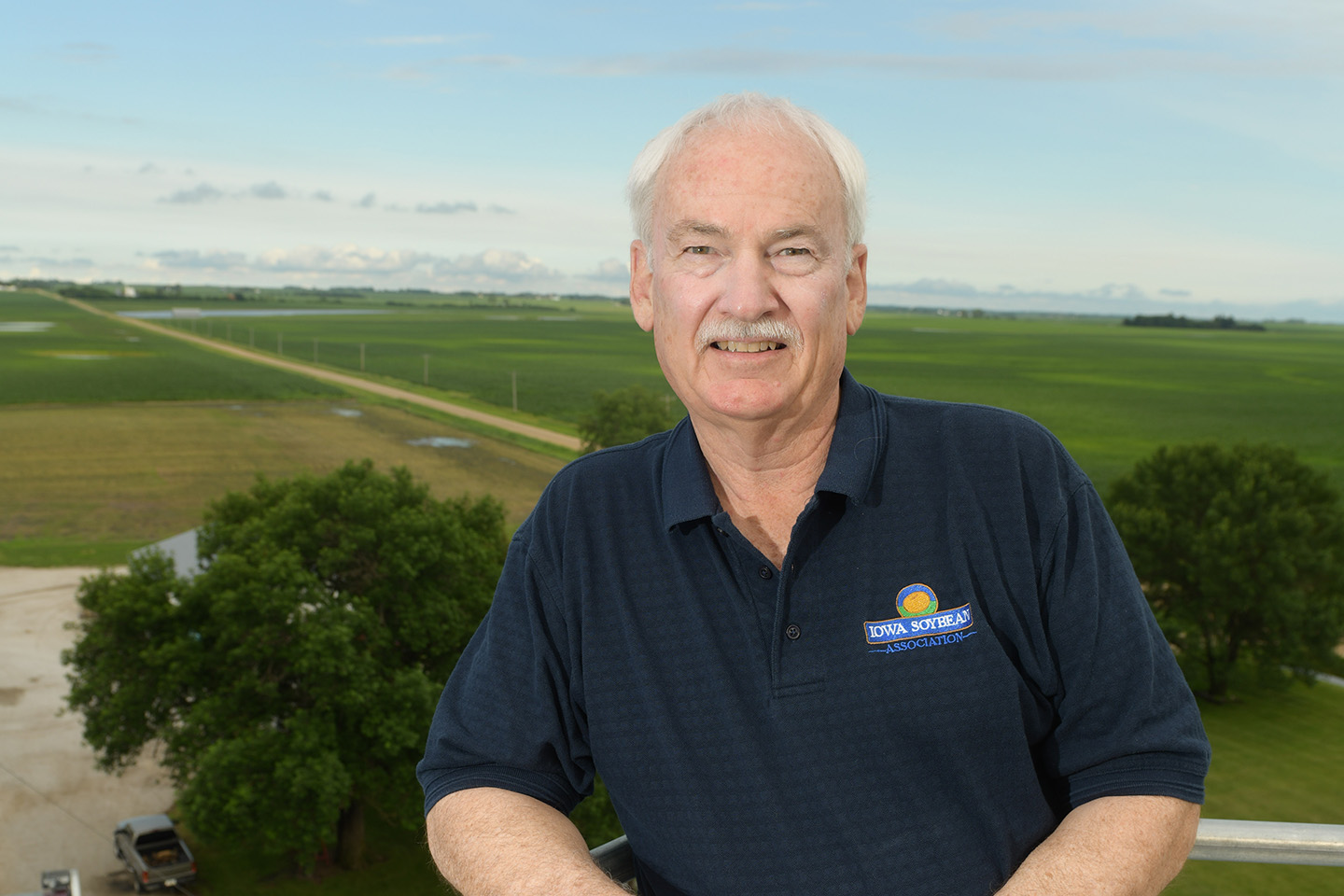
(Photo: Iowa Soybean Association)
Soy is a food, fuel and much more thanks to emerging uses
May 26, 2022 | Joseph Hopper
Soybeans are everywhere. They are in the food we eat, the vehicles we drive, the roads we drive on, the homes we live in, the periodicals we read and the shoes we wear. It’s even the turf for our favorite sports teams.
Many farmers today call soybeans “food and fuel,” knowing the crops they grow will likely become food for both livestock and people as well as fuel for vehicles across the globe. Thanks to the development of new uses, soybeans serve more than a single purpose. Each new use developed and released commercially increases demand and has the potential to join “food” and “fuel” to become soy’s third word.
“The reason we invest in new uses as soybean farmers is because we want to create markets to sell our products,” says Ron Heck, past president of the Iowa Soybean Association (ISA) and the American Soybean Association. “If we didn’t make those investments, these products wouldn’t happen because no commercial company has the incentive to try these different new uses.”
Heck, a lifelong farmer from Perry, says farmers must make the long-term investment in new uses to attract commercial funding, which then fully develops a market for soybeans. The investment, however, can take years or even decades to bear fruit. It’s something he knows firsthand, recalling the development of what was initially known as “soy diesel.”
“There is no guarantee of success on any of these ideas,” Heck says. “We didn’t think biodiesel was going to be this big. We were trying to find a market for our surplus oil because the world needed the protein from the meal and didn’t need the oil as much because no one had developed new uses for it.”
Heck adds, “Somewhat reluctantly, the soybean industry tried soy diesel, and figured out how they could make it work. We weren’t looking for a huge market; we were just looking for a place to get rid of our excess oil.”
Concerns about crude oil supply, cleaner air and carbon reductions have made renewable fuels more interesting, and we eventually had a hit on our hands.”
Even with the initial success, it wasn’t until the movement behind soy diesel brought in additional partners. This added vegetable oils, used cooking oils and renderers into the mix for the birth and success of modern biodiesel as we know it today.
“When we decided to bring in everybody it greatly increased our lobbying ability and the number of skilled people to help us all promote biodiesel rather than just soy diesel,” says Heck.
Thirty years later, biodiesel is celebrated as a success.
“We got the expertise and feedstocks supply and stuck with it,” Heck says. “It’s become a success.”
Biodiesel is not the only new use the ISA has helped bring to fruition. Binders full of various new use research projects supported by ISA over multiple decades line the office of ISA Senior Director of Market Development Grant Kimberley. Some were destined only to be research papers. Others became a real product, driving demand for the soybeans Iowa’s farmers grow.
“It’s like having a balanced portfolio for your retirement investments,” Kimberley says. “We try to invest in opportunities that are diversified. Some will be bigger opportunities than others, and you don’t always know what will have the best long-term potential.”
Individually, projects and new uses don’t demand a huge amount of soy.
“But when they’re combined, it can add up,” Kimberley says.
A key project ISA has recently been involved in is the research of bio-based asphalt.
“Iowa State University started the work, and the United Soybean Board has been involved. They’re trying to see how it performs, and once the performance is verified, get some commercial end-users to start using it,” Kimberley says.
Whether it’s a product using a little bit of soy or a lot, developing new uses for soybeans is essential.
“You don’t really know how far it can go,” Heck says. “I remember when soy candles were new, which is important to me because I’m allergic to candles but not soy candles. These small markets are important; it introduces consumers to soy oil, then to soybeans and then to soybean farmers. It all helps when we get the next new idea.”
Back